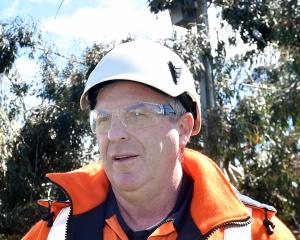
A team from the University of Otago, led by Prof Mark Stirling, completed its investigation of a section of the Settlement Fault on a farm just outside Owaka yesterday.
The project involved digging a 6-metre deep, 38-metre long trench through an upthrust section of the fault known as a "fold", and examining sediment layers extending back an estimated 50,000 years.
Project spokesman Dr Jack Williams said although it was too early to provide definitive conclusions, some initial approximations could be made.
"The Settlement Fault is a reverse fault, where the eastern side has been shunted up by several metres," he said.
"By looking at the clearly defined lighter clay layer that extends along the length of our trench, we can see that at some point, probably in the past 10,000 years, there has been an earthquake likely to be greater than 6.5 to 7 magnitude here.
"There are features that may be infilled fissures in earthquake-broken ground, and the line of the clay — which would originally have been horizontal — has a clear upwards movement about halfway through the trench."
Soil samples would be taken for dating, and a full assessment of results made to feed into the National Seismic Hazard Model, providing an estimate of hazard risk for residents, he said.
The work — funded by the EQC University Research Programme — would build on an assessment that took place at the nearby Catlins Lake about 15 years ago.
Although the fault sat in the lower slip range, awareness that it was present and had the potential to be active allowed locals to plan accordingly, he said.
"This has probably led to three or four earthquakes over the past 50,000 years, so I wouldn’t want anyone to lose sleep over its presence.
"On the other hand, as we saw in Christchurch a decade ago, and in Turkey more recently, people and authorities shouldn’t be complacent about the hazard."
Dr Williams said the sizeable trench would be back-filled and turfed before their departure.
"We couldn’t do it without the goodwill of the landowners, so we’re very grateful for their permission to dig."











